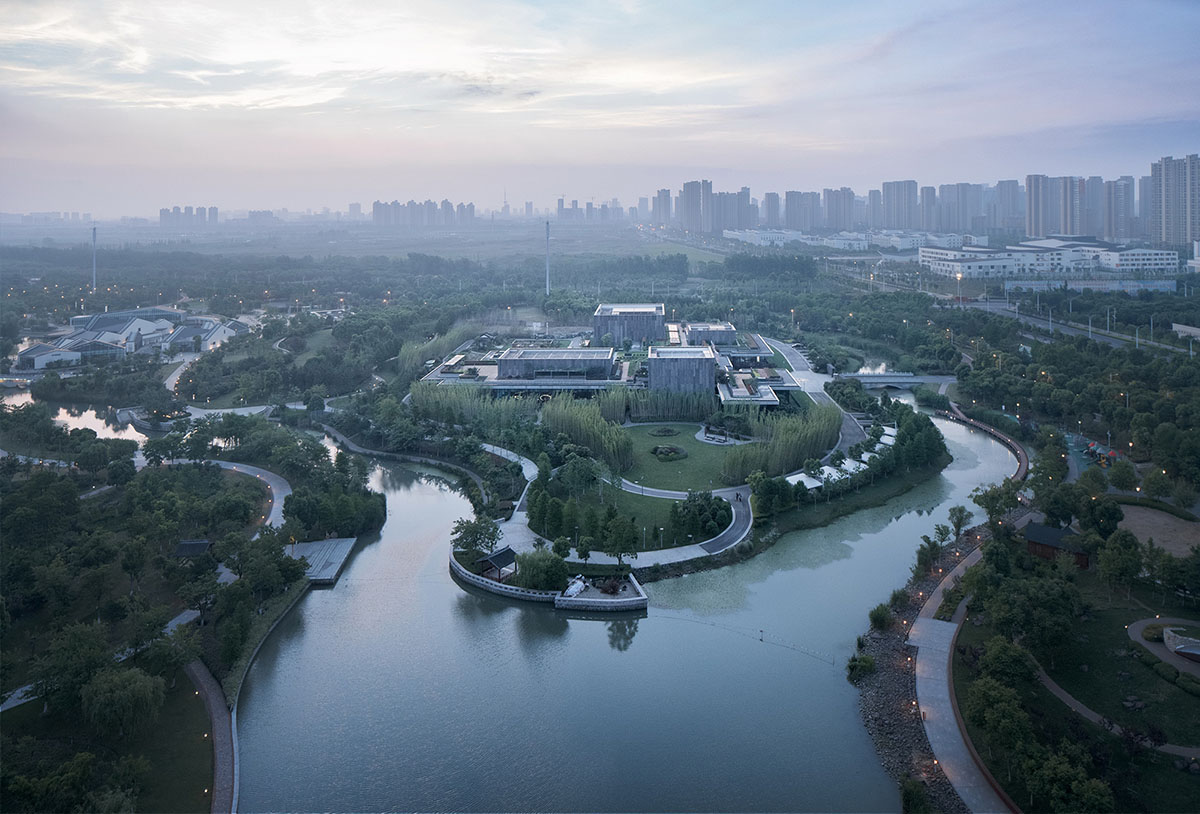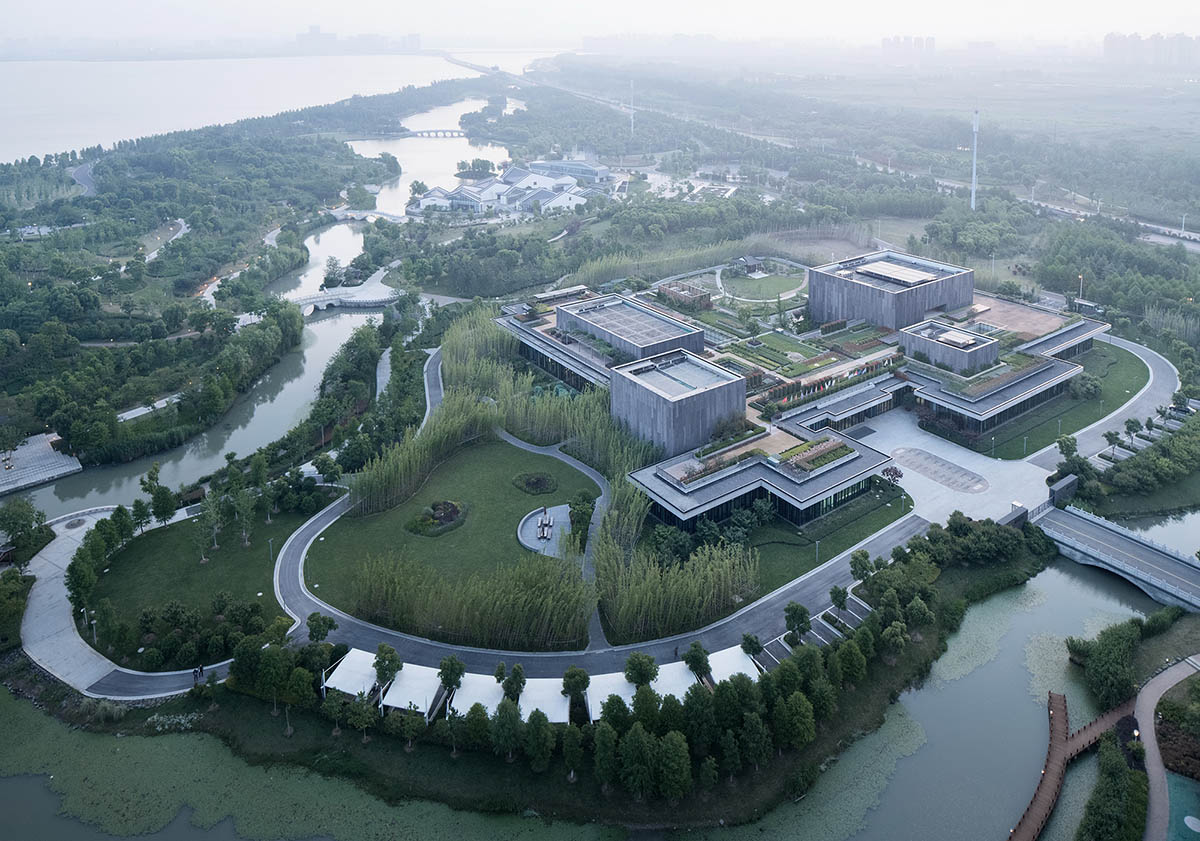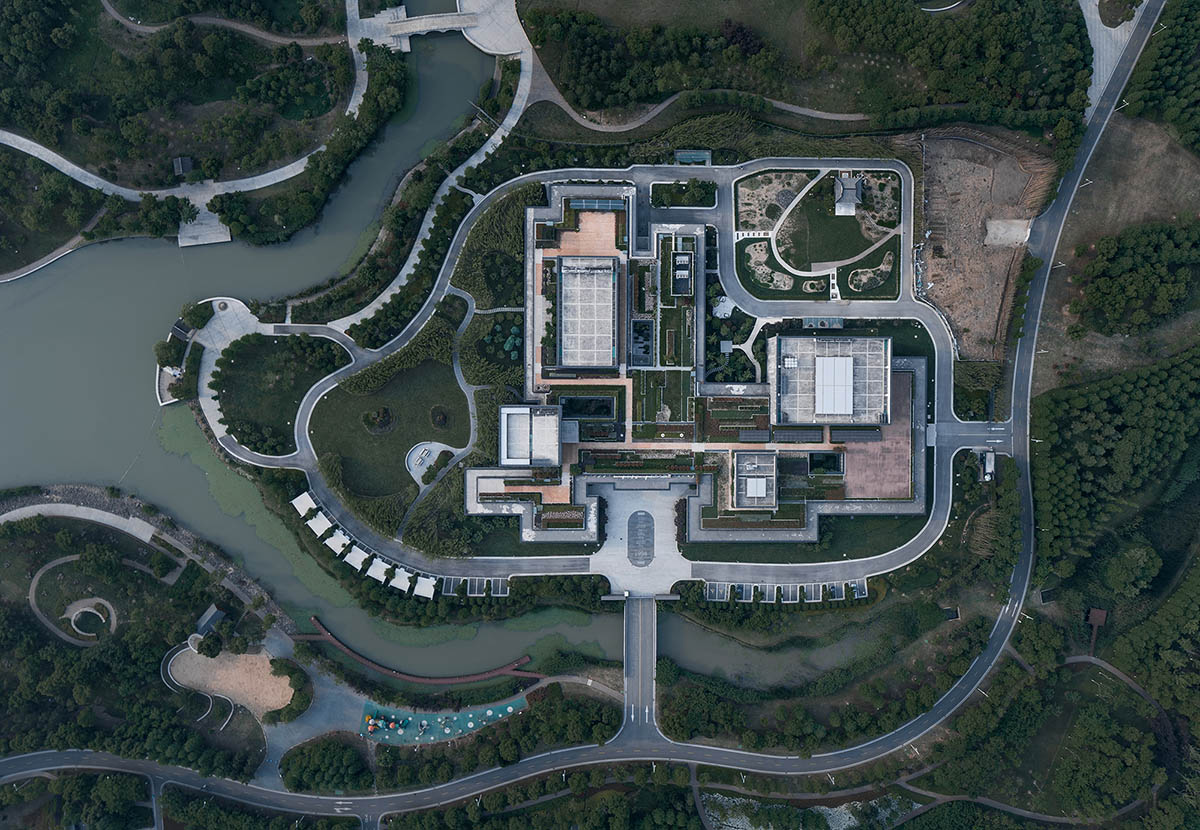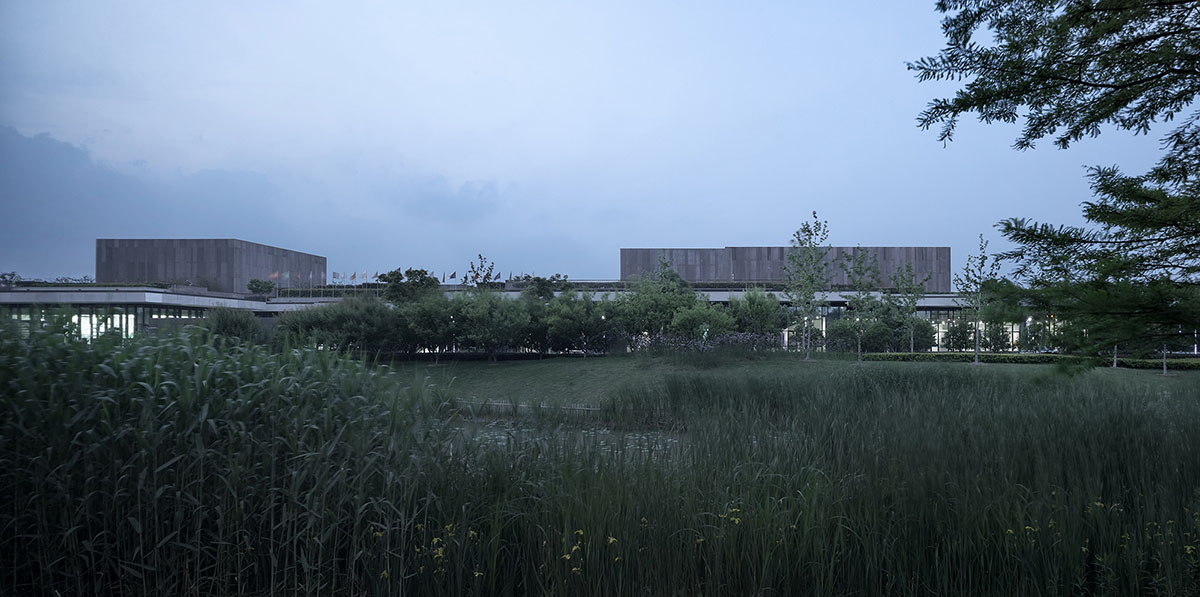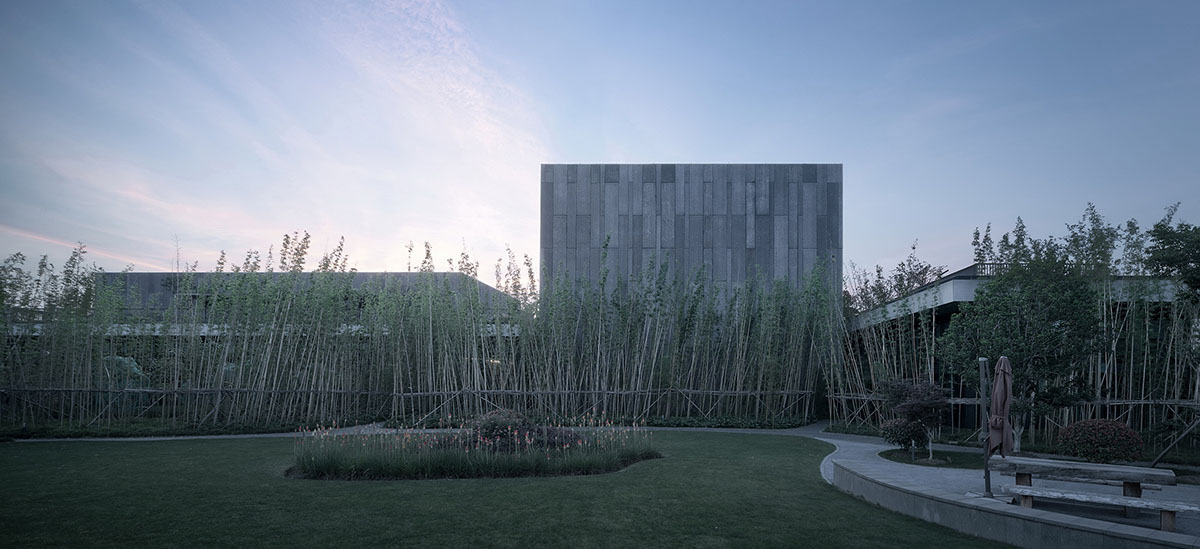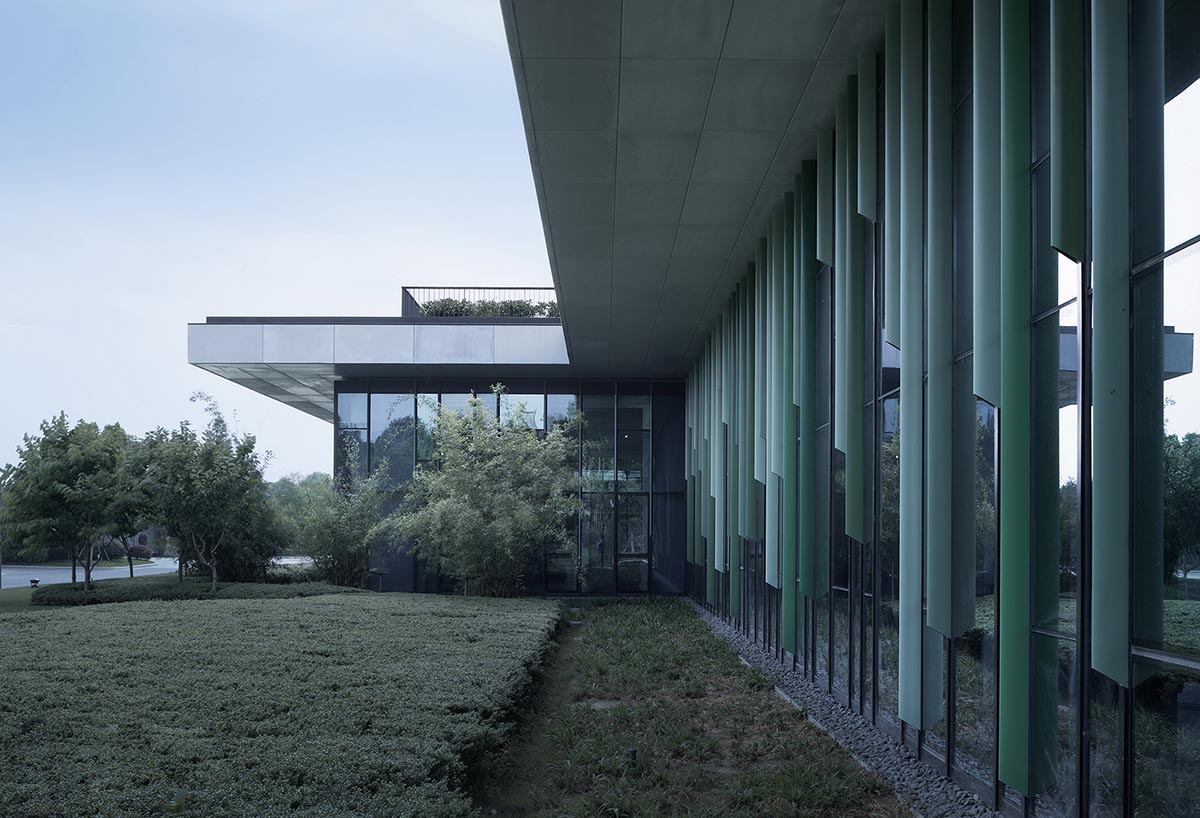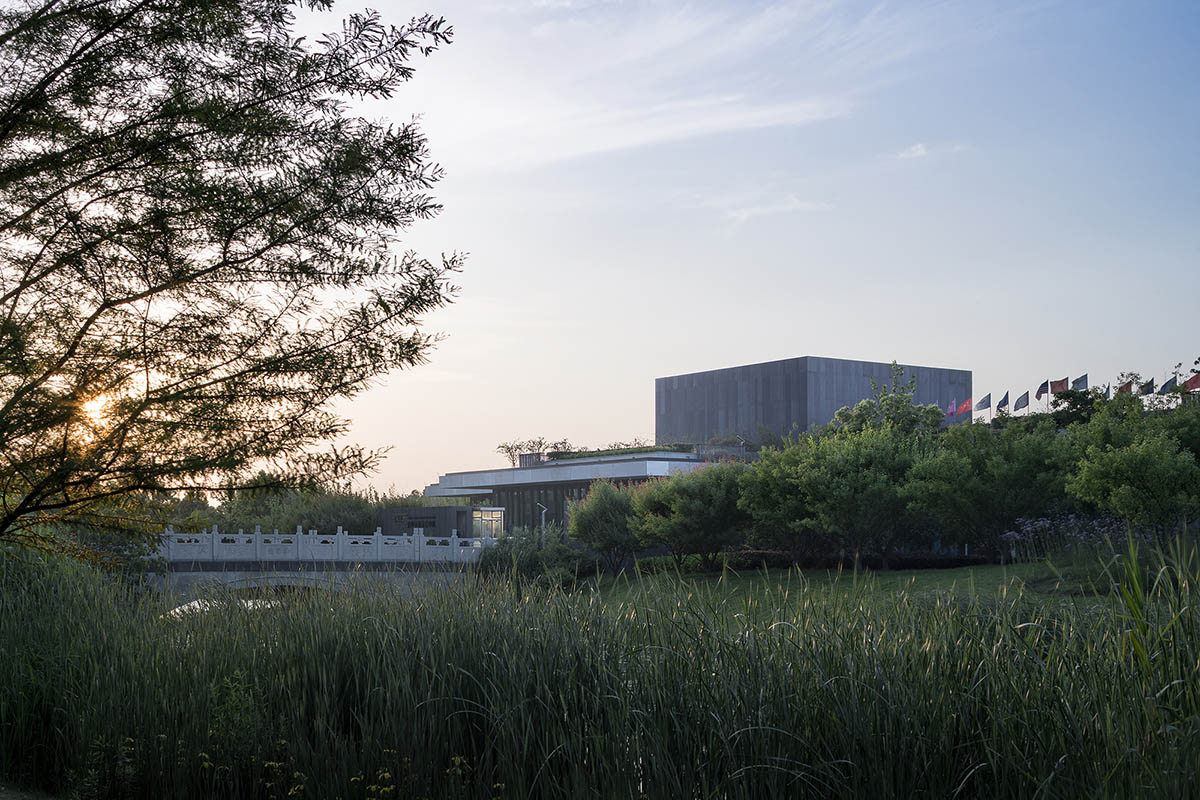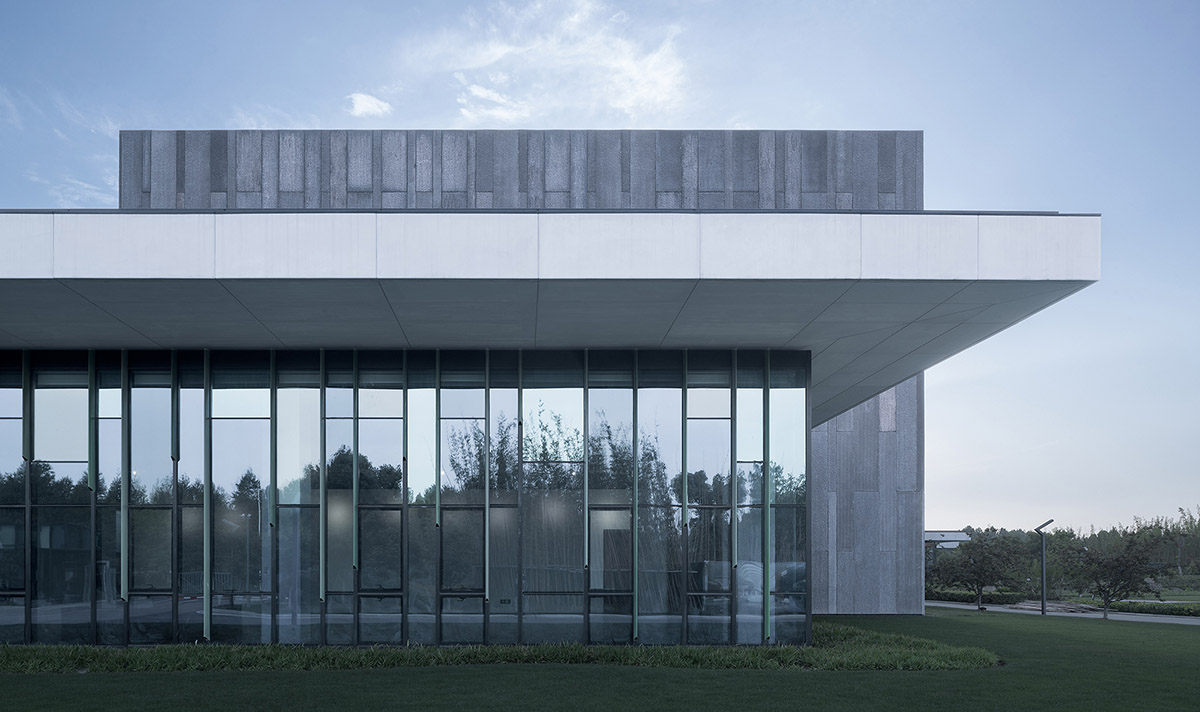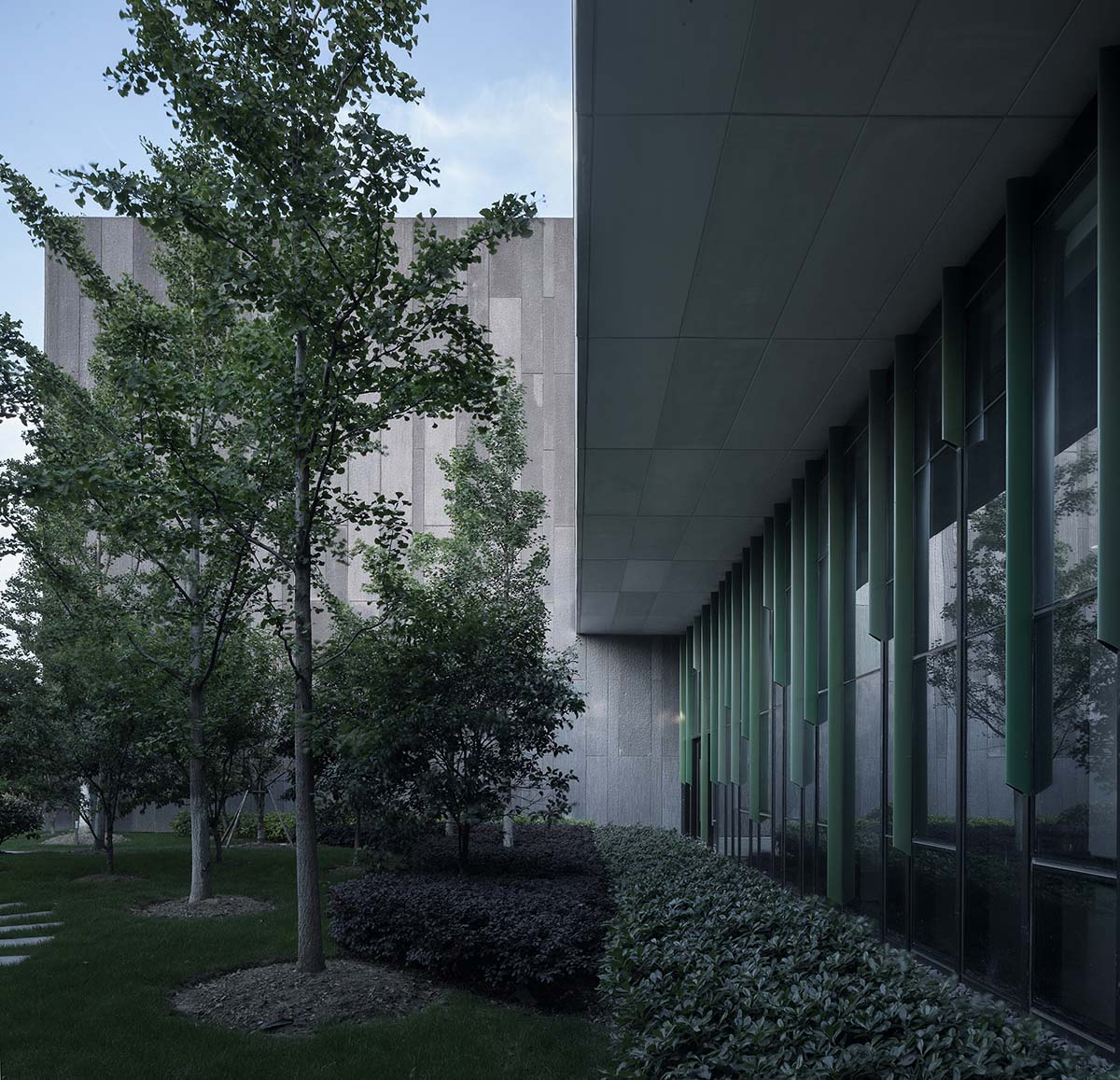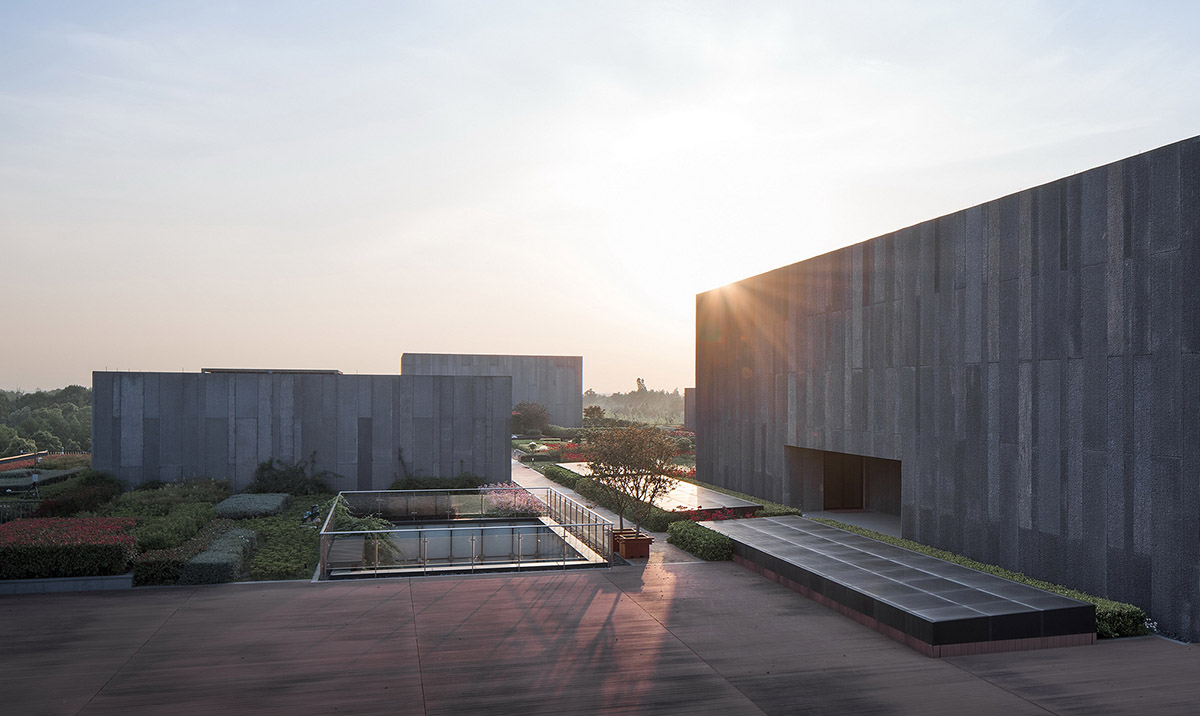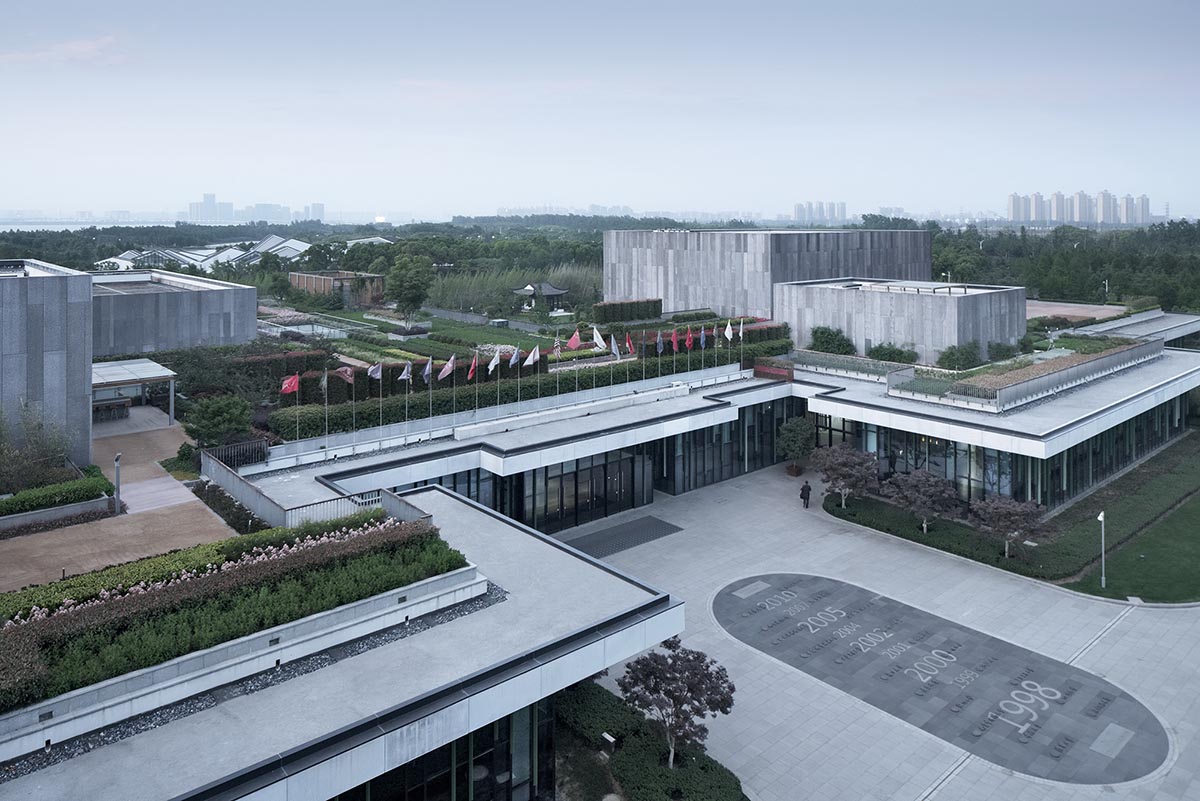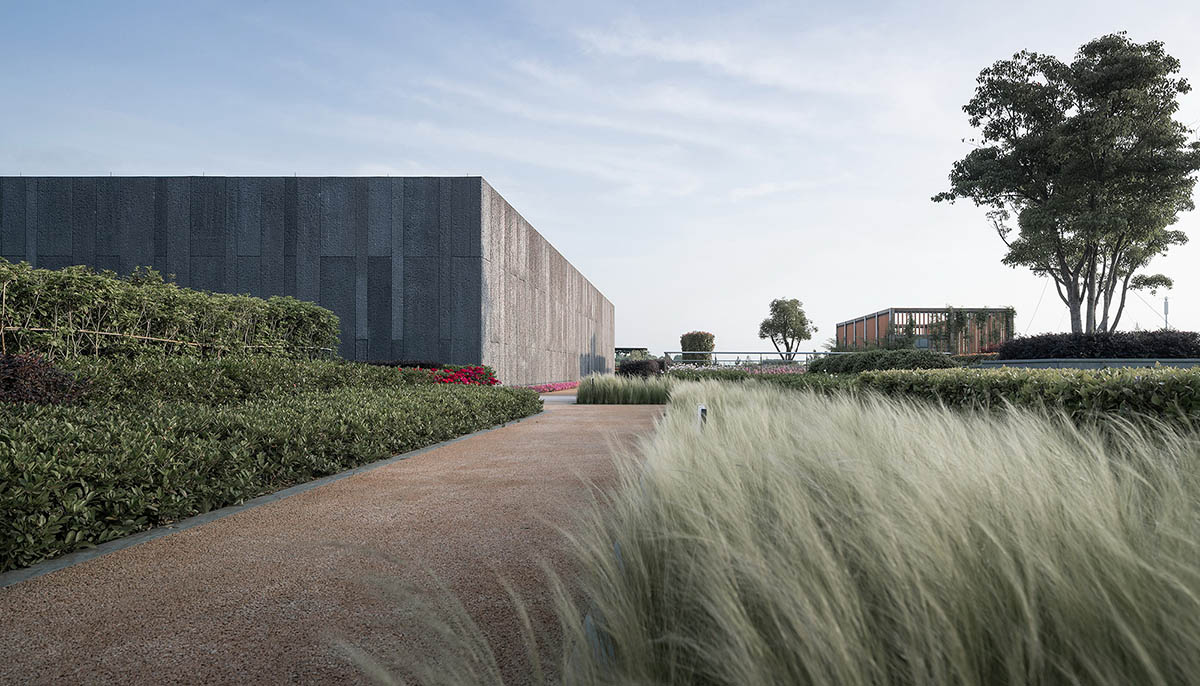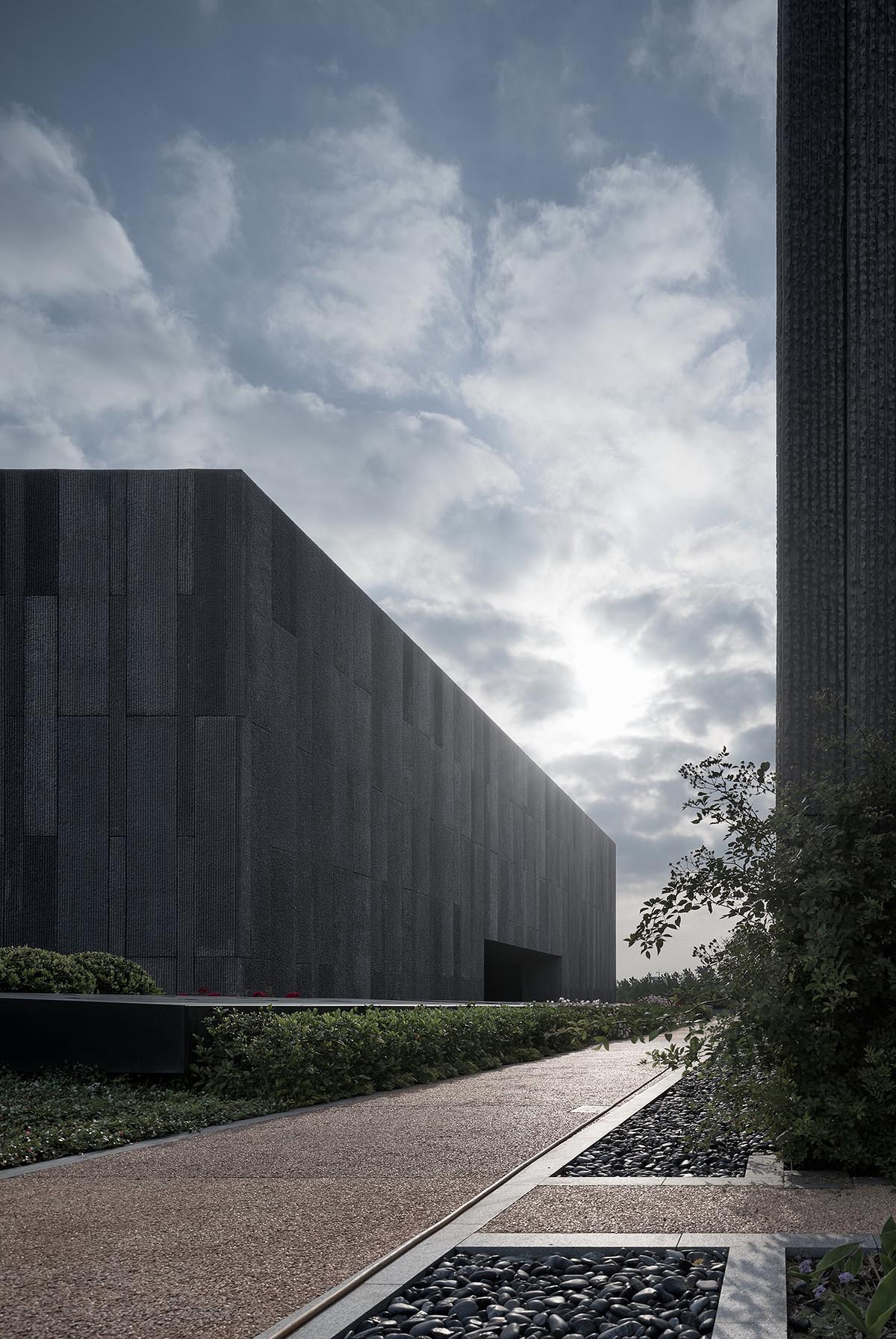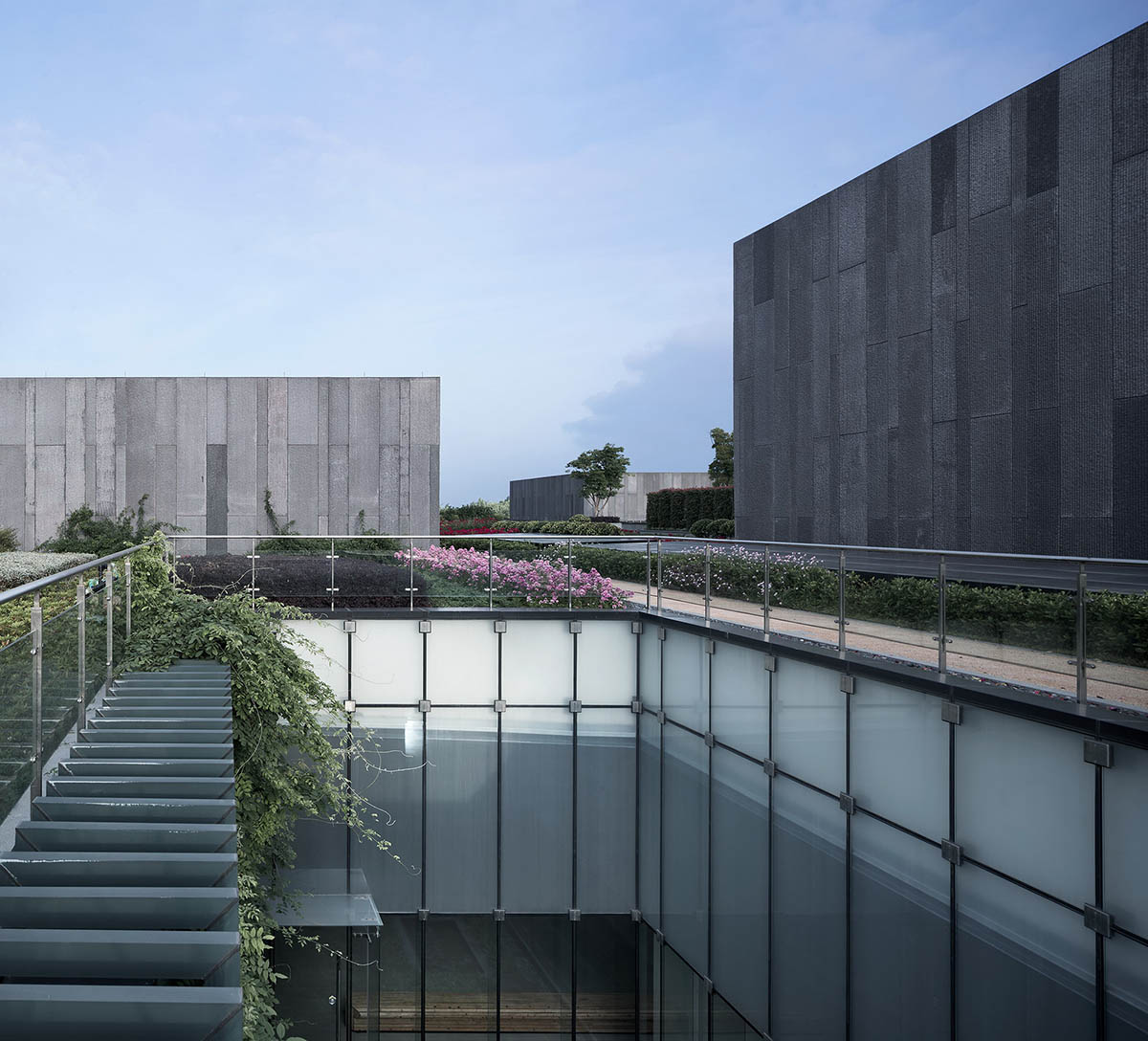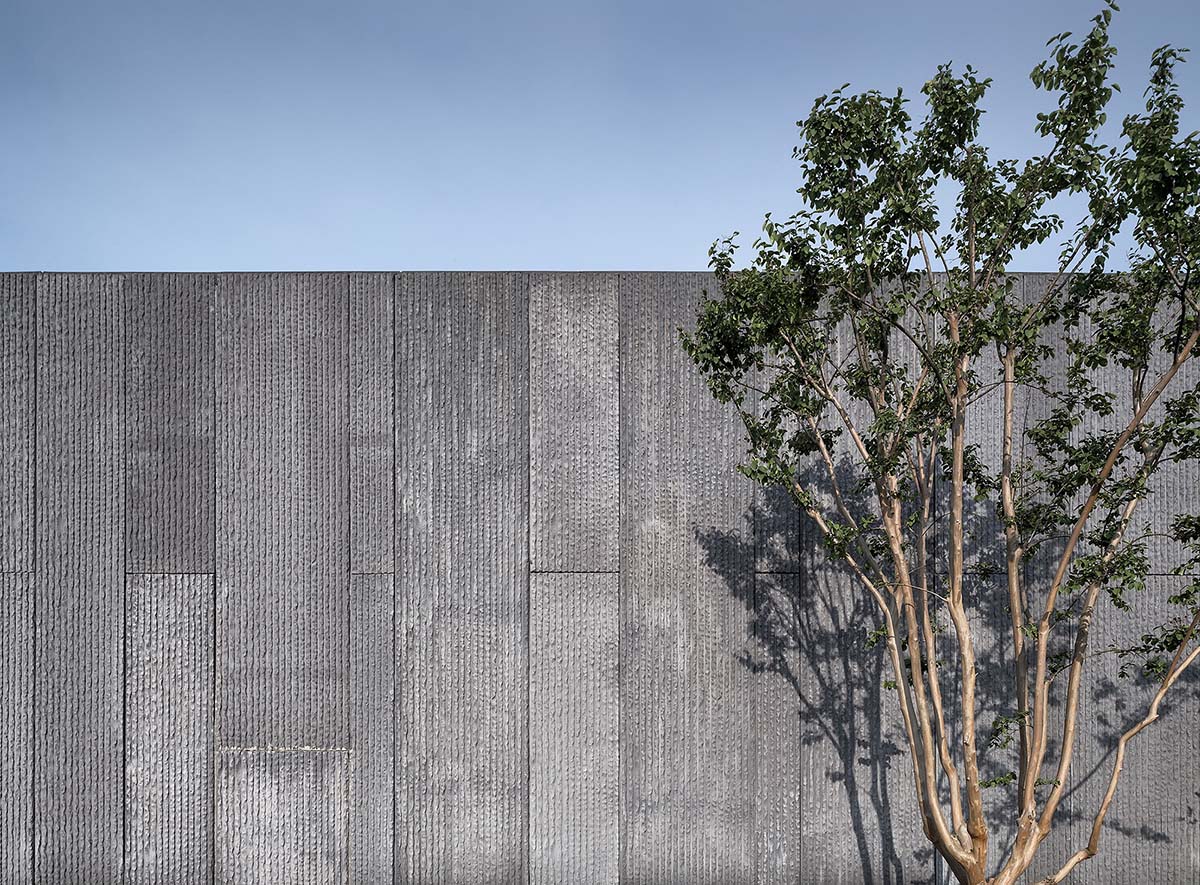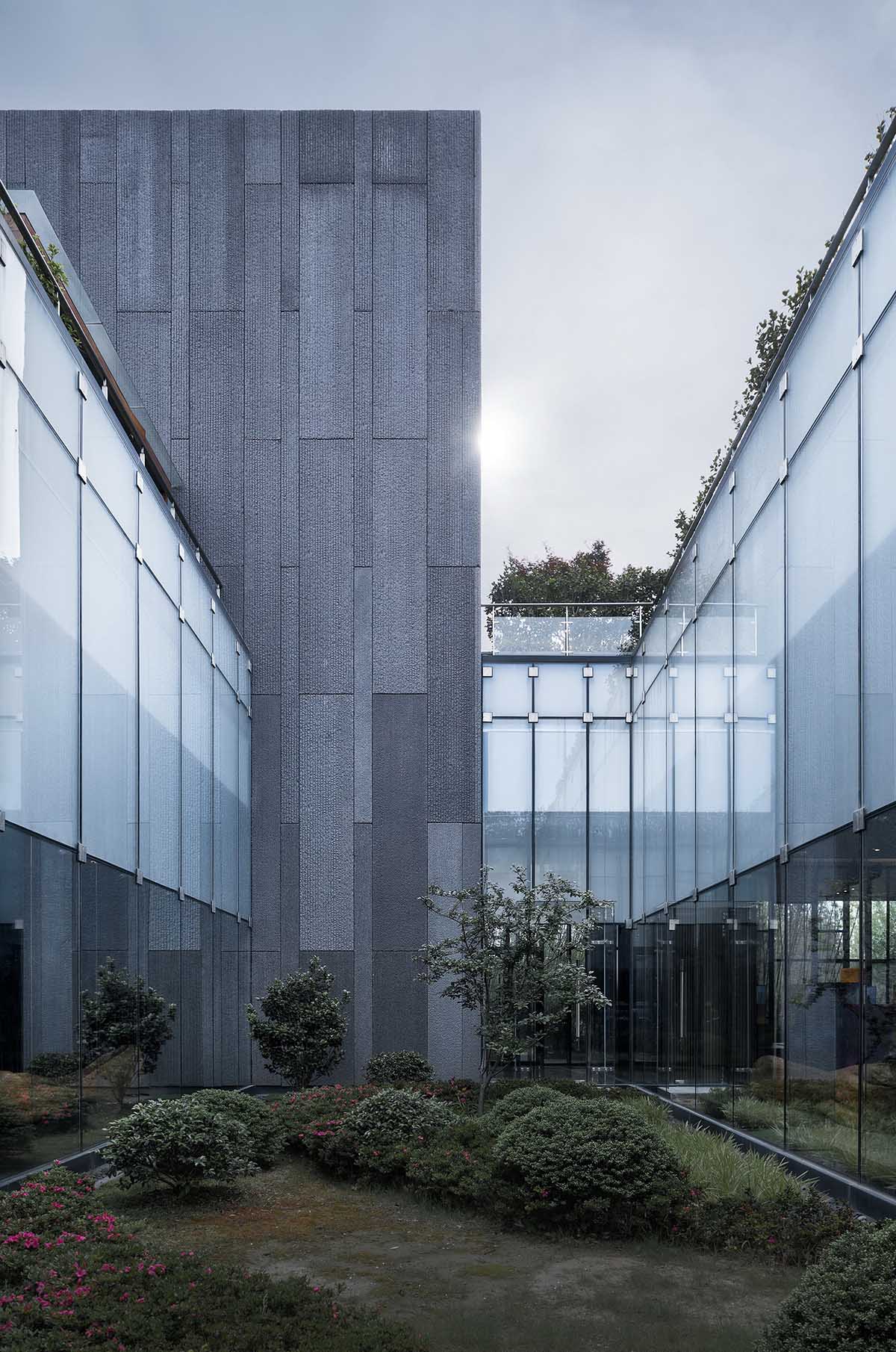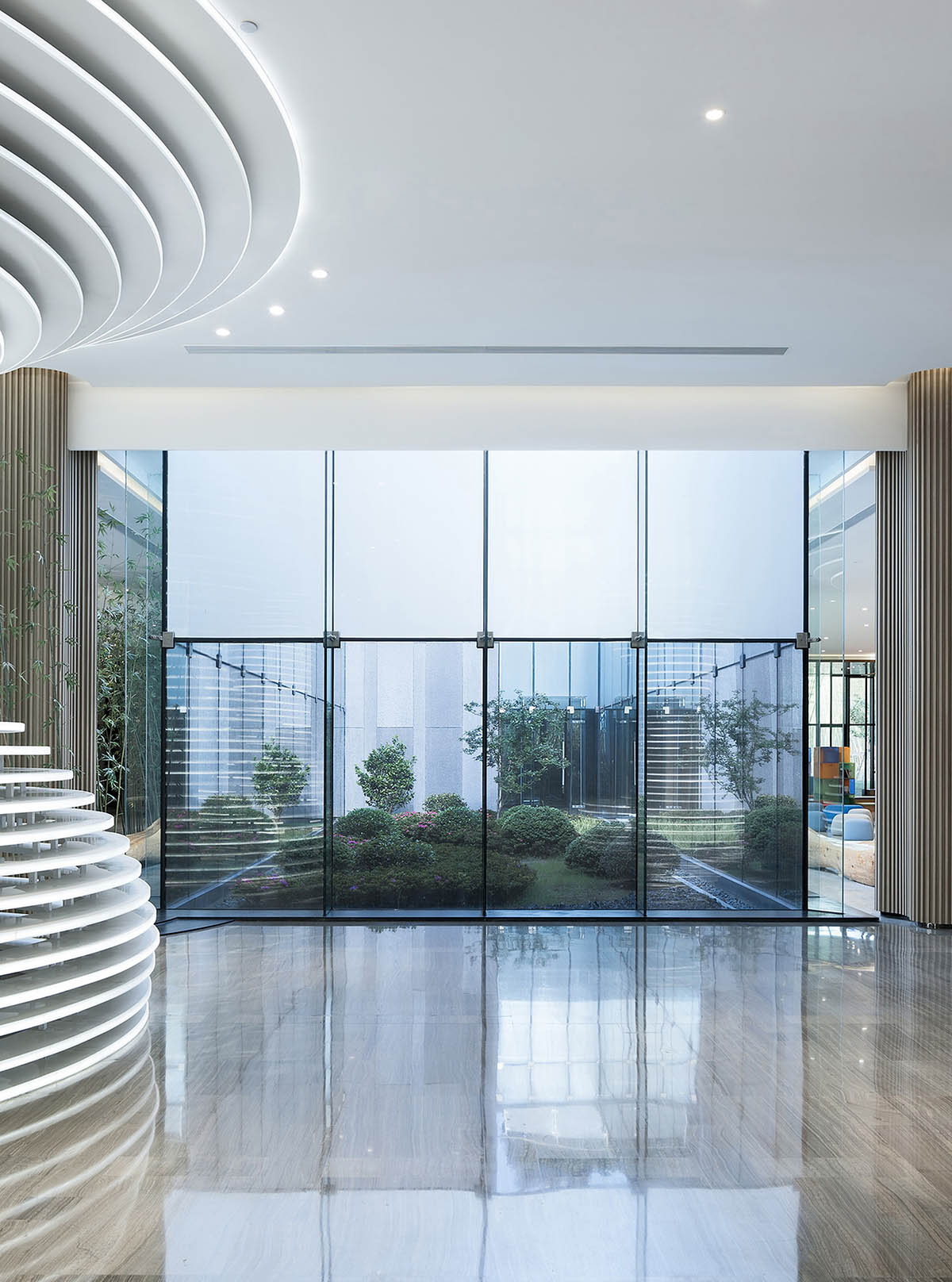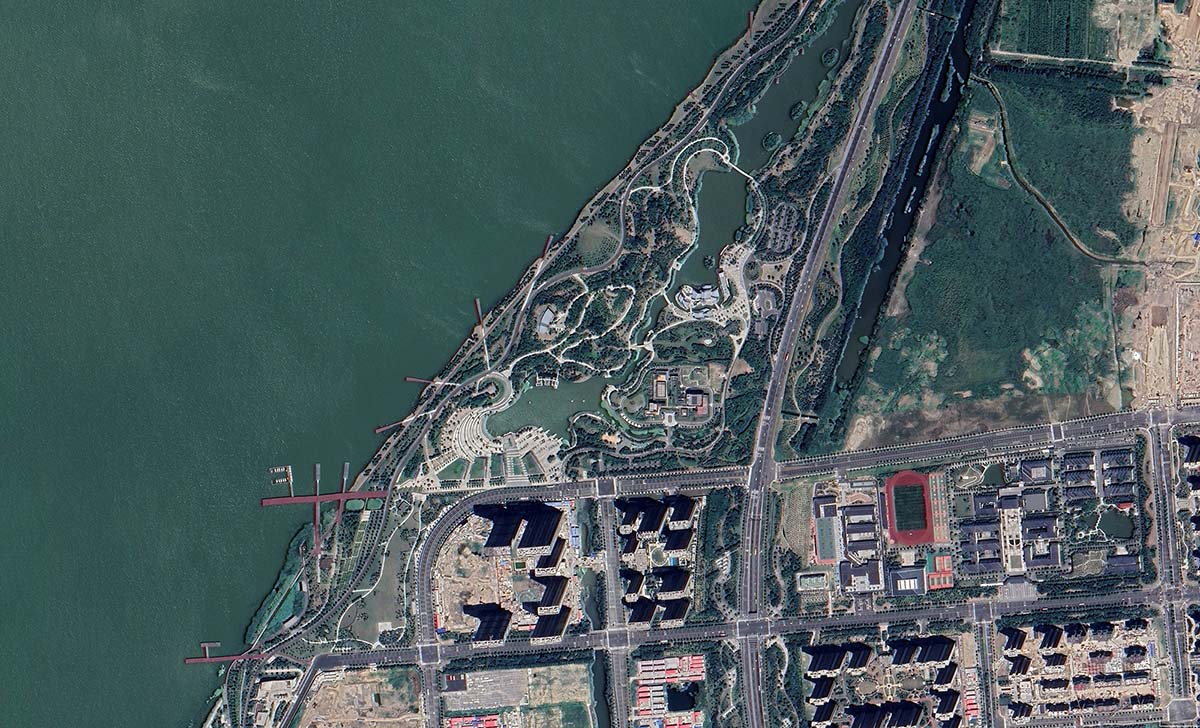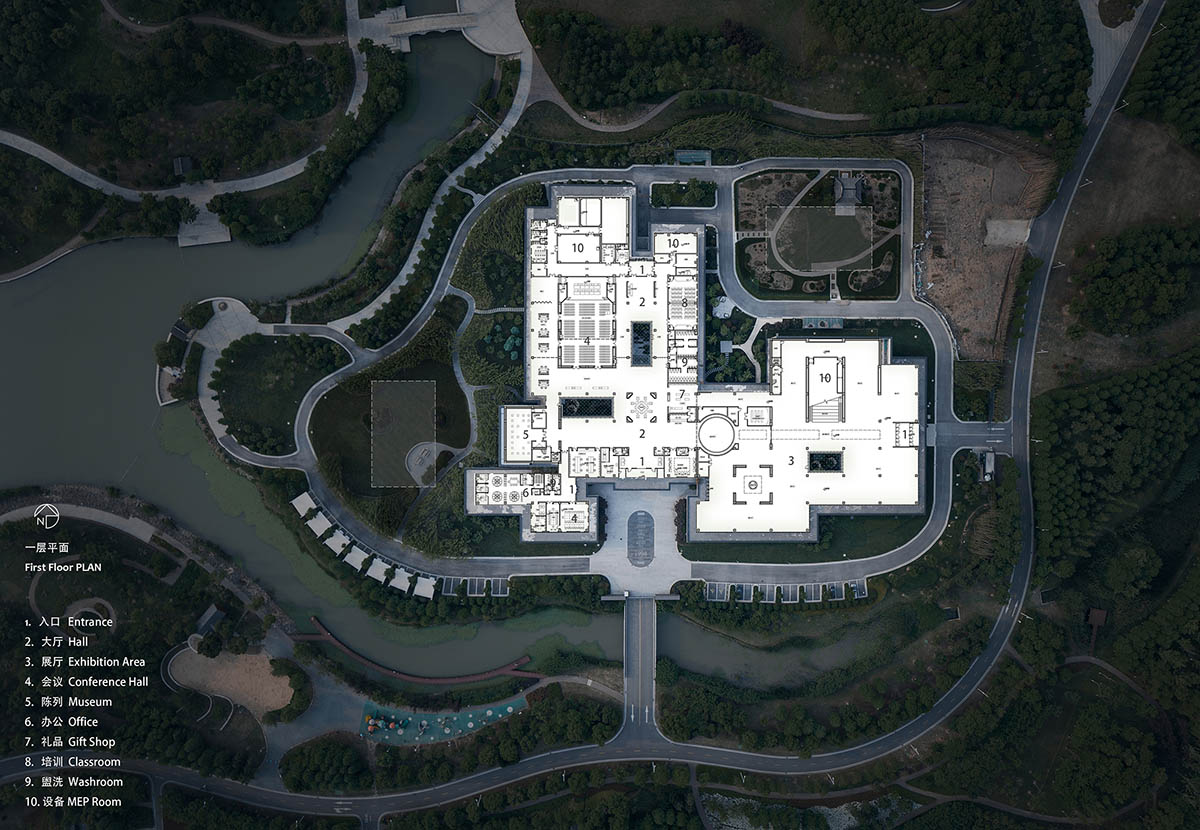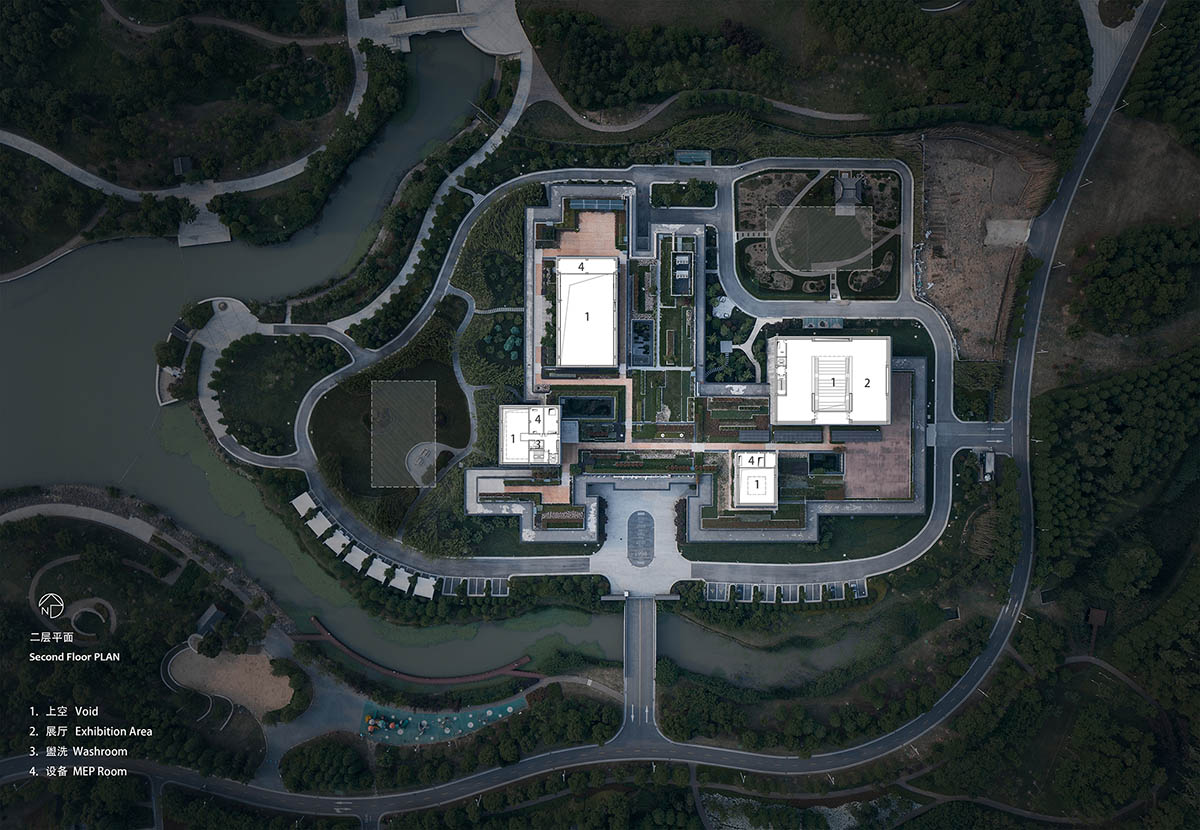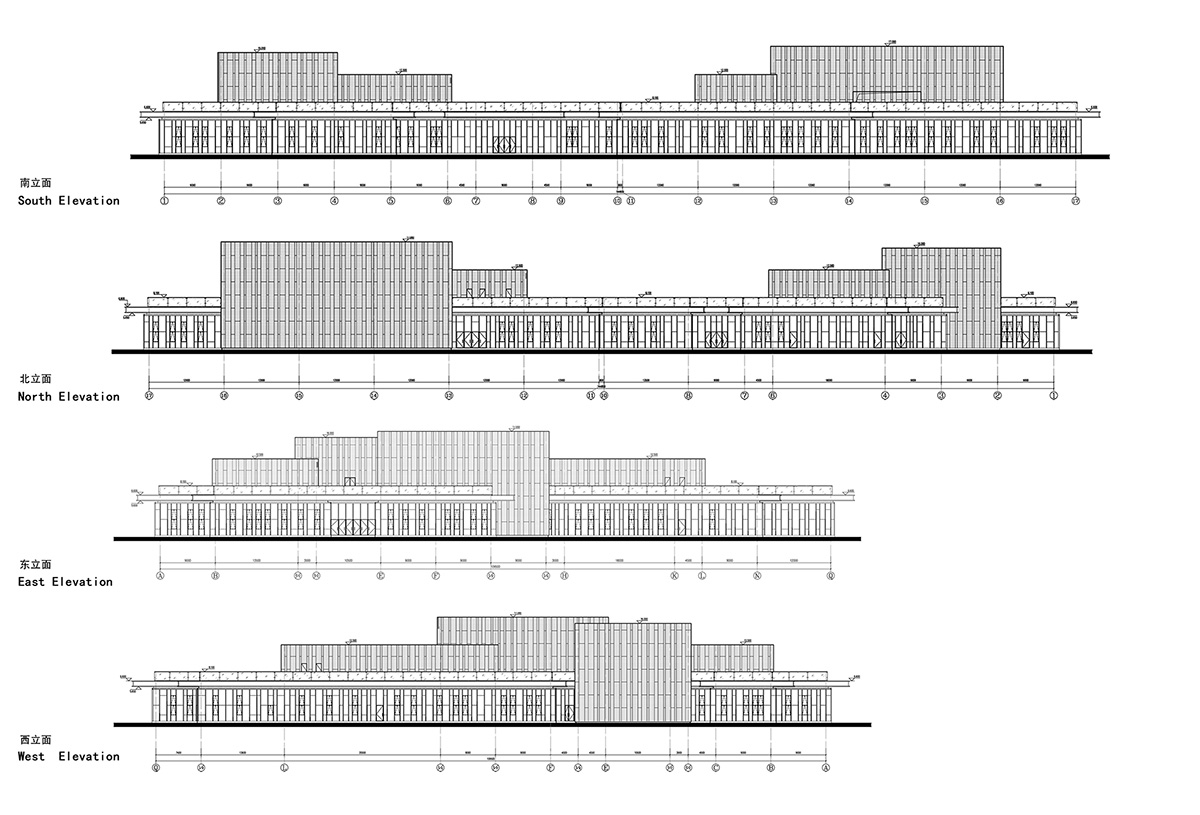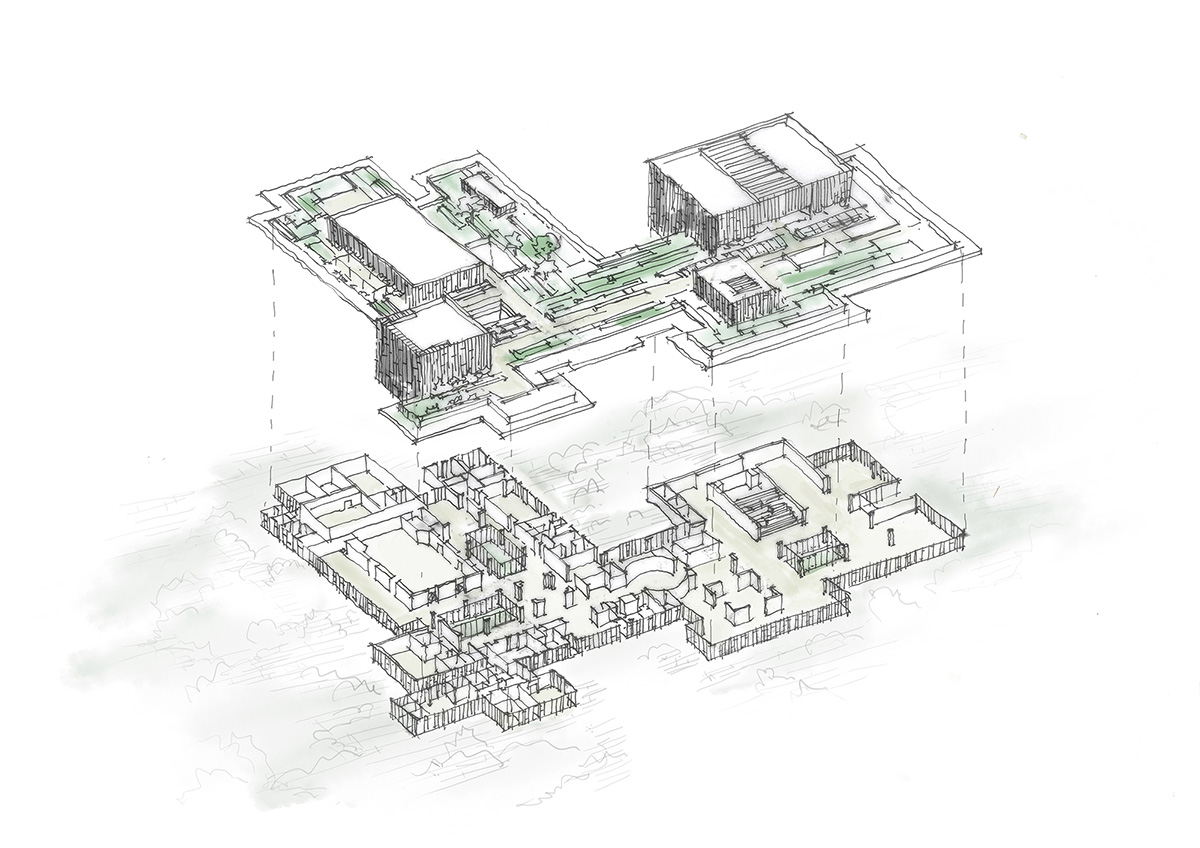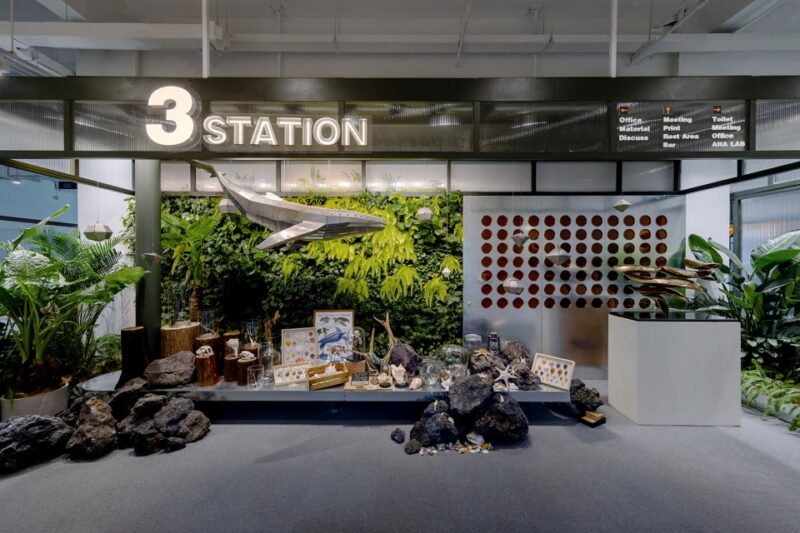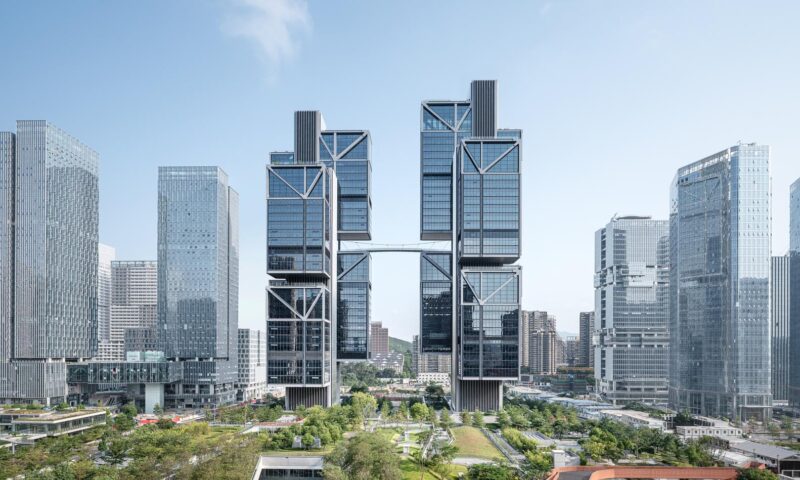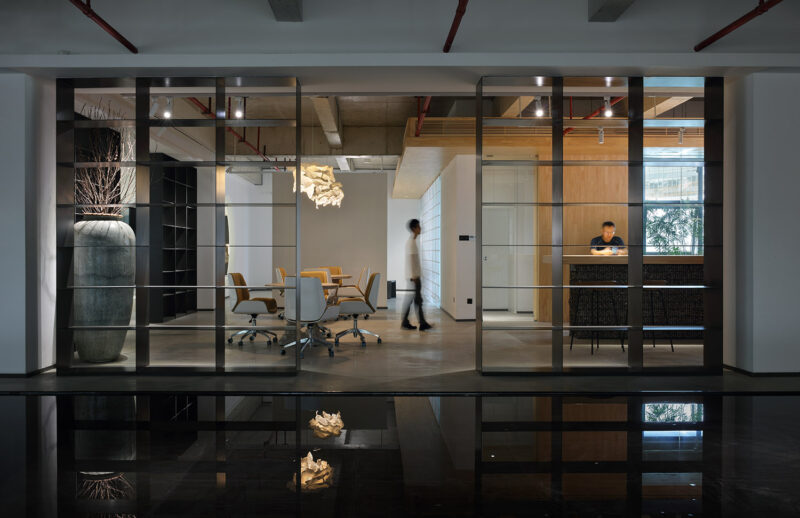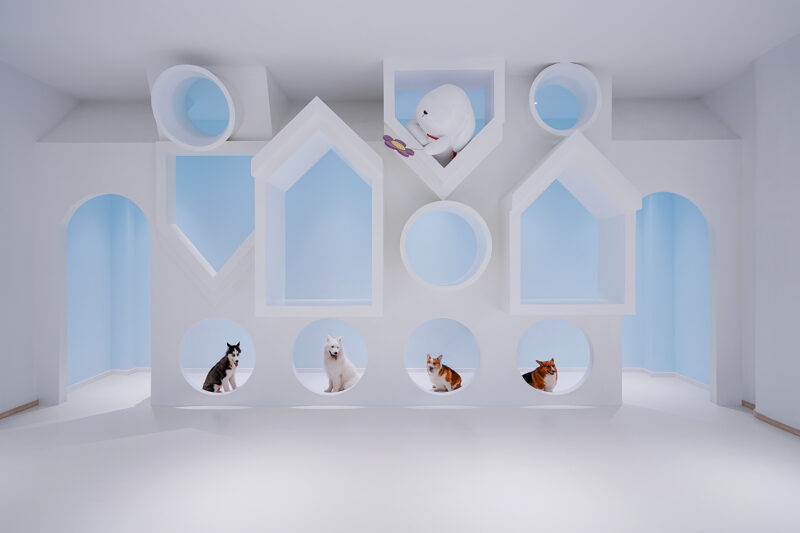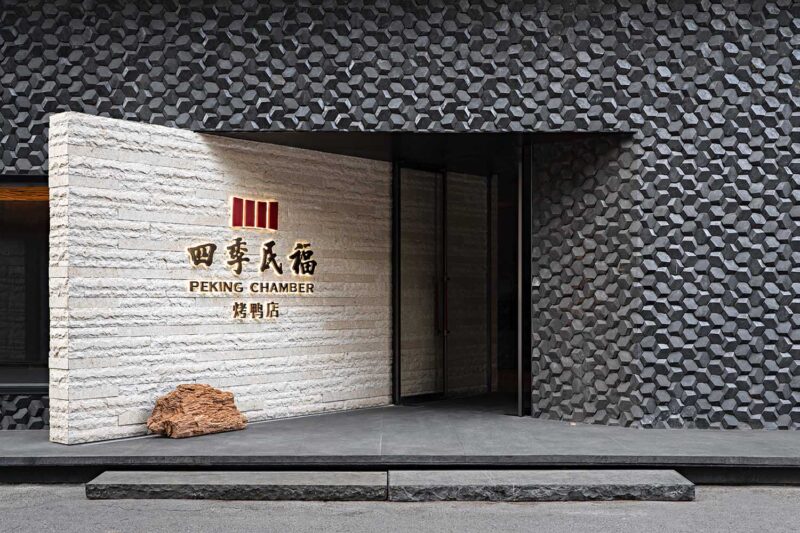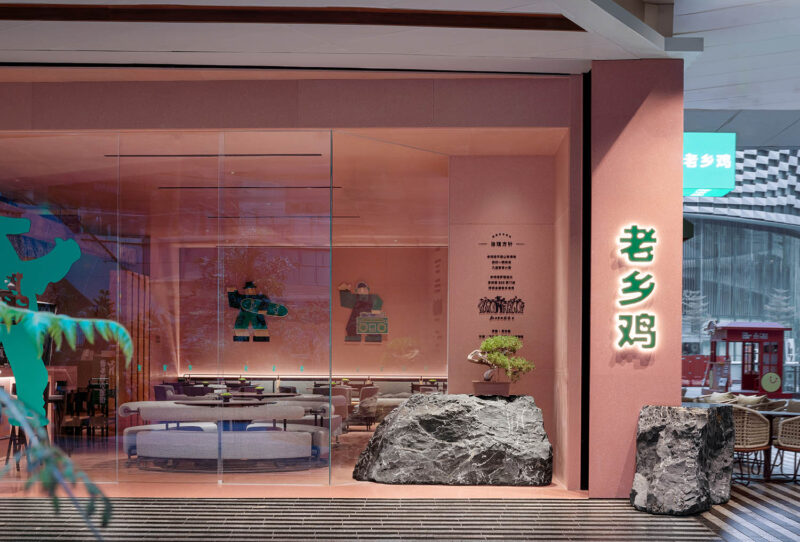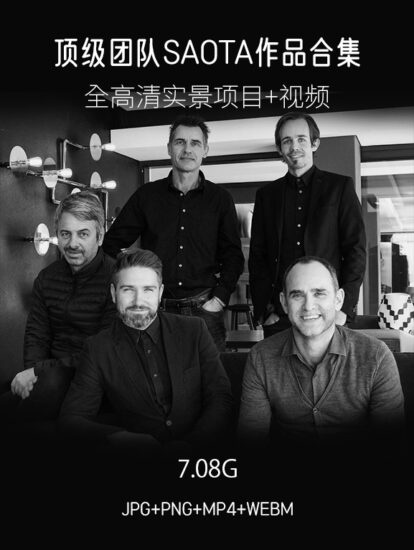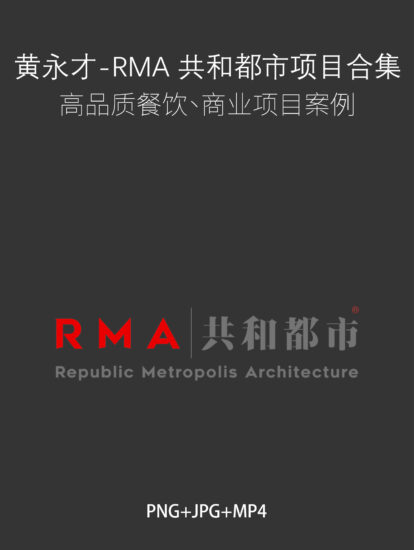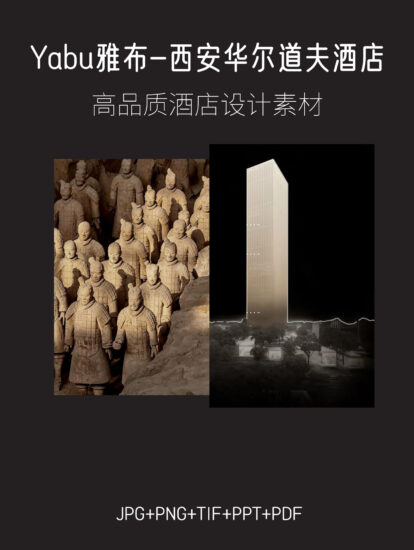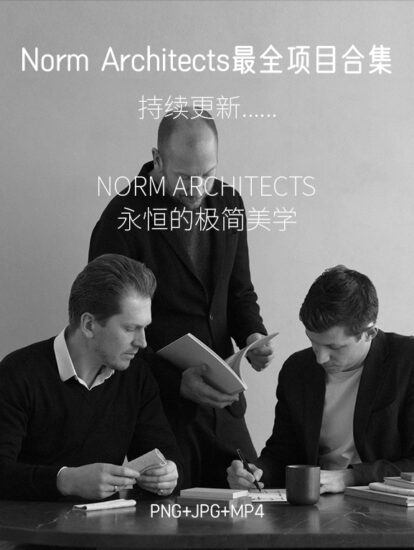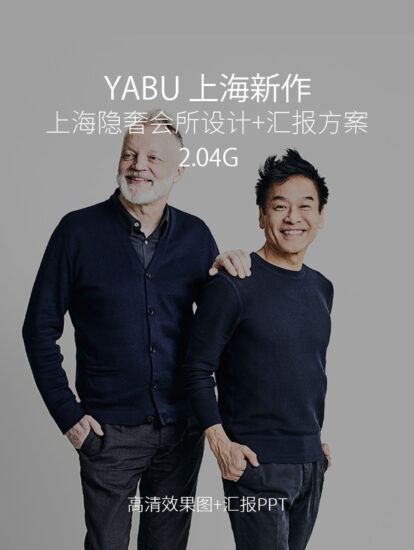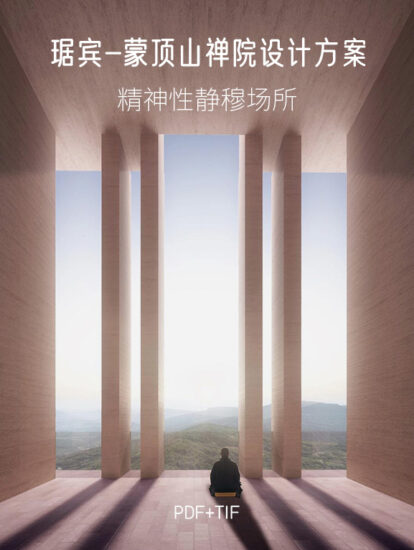LOFT中國感謝來自 UAD 的辦公綜合體項目案例分享:
唐仲英基金會中國中心作為唐仲英基金會在中國大陸的總部,是一座功能複雜的綜合體。整個建築需滿足基金會日常的辦公;用來存放基金會各種禮物的陳列館;同時承擔不定期來自全國各個成員高校團隊的交流活動(展覽、會議、培訓等等)要求。
As the headquarters of Cyrus Tang Foundation (CTF) in mainland China, the project is a complex which integrates multiple functional spaces, including the foundation’s offices, a museum for displaying various gifts that the foundation has received, and spaces for holding exchange activities with its college members, including exhibitions, conferences, and training, etc.
項目坐落於吳江鬆陵生態公園內的中心區塊,地理位置優越,環境優美。整個設計以融合周邊環境為出發點,並傳承基金會 “服務社會,奉獻愛心,推已及人,薪火相傳” 的宗旨,可以提煉為消隱的和綠色的建築。
Situated at the central area of East Tai Lake Ecological Park in Wujiang District, Suzhou, China, it enjoys favorable site conditions and beautiful landscape. The design focuses on the integration with the surrounding environment, inherits CTF’s mission of serving disadvantaged communities with love and passing on the spirit of giving, and produces a “dissolved” and green building.
∇ 從西側鳥瞰 Birdview from west
∇ 西南方向鳥瞰 Birdview from Southwest
∇ 場地概覽 Siteview
1.消隱的建築
1.1 有機的平麵
隨著基金會的不斷發展壯大,所需功能空間也會不斷增加,設計充分考慮以後預留發展的空間需求,在不規則的用地範圍內采用了有機的平麵形式,建築輪廓能夠任意靈活的伸縮和調整。未來發展建築可以從現有的布局自然的“延伸”出去而不破壞整體感。另一方麵,曲折的外部輪廓可以破除建築冗長單調的界麵,這種穿插滲透式的布局策略也能將景觀和建築相互滲透,確保對環境景觀造成最小程度的破壞。
1.”Dissolved” Architecture
1.1 Organic Layout
With the continuous development and growth of the foundation, its demands for functional spaces will continue to increase. The design fully considers the necessity of leaving space for future development and therefore applies an organic layout on the irregular site, to allow flexible expansion and adjustment of the building’s outline. Future extensions can be constructed naturally alongside the existing layout, without destroying the overall unification and harmony. Additionally, the curvilinear contours break through the building’s monotonous interfaces, and the layout strategy of interpenetration enables the architecture to coexist with the natural landscape in the most environmentally friendly manner.
∇ 主入口 MainEntrance
∇ 從南側看建築 View from south
∇ 從西側看建築 View from west
∇ 黎明鳥瞰 Birdview at dawn
1.2 消隱的體量
建築主要功能集中一層布置(層高7.0m),最大化減少對公園的壓迫感。同時,一層屋頂花園又是被抬高的公園“植被”,既修複了生態公園的綠化界麵。又是視野極佳的“觀景台”,提供了優美的活動場地。局部凸出的建築體量(陳列館、展示廳、多功能廳等)退在屋頂花園後,猶如幾個“雕塑”,強調建築的“分量”感,也增加了整個建築的空間層次。
1.2 “Dissolved” Volumes
Main functions are designed on 1F (storey height: 7.0 meters) in order to minimize the architecture’s intrusion to the park where it is located. Meanwhile, the rooftop garden functions as elevated vegetation, which not only increases the park’s green area, but also provides a beautiful open viewing platform and activity venue for visitors. The protruding building volumes (museum, exhibition area, and multi-function hall, etc.) hide behind the rooftop garden, like a few sculptures, highlighting the “solidness” of the architecture while also strengthening the hierarchy of spaces.
1.3 消隱的立麵
一層主要立以玻璃幕牆為主,不同明度綠色玻璃又韻律的組合,再加上幕牆立梃猶如“竹林”意向的襯托。整個立麵作為維護結構被虛化。幾個凸出體量的立麵肌理也延續“竹子”的豎向分割,渾然一體。純粹和完整的立麵也是各建築設備精心布局的結果:各設備管井和出口都統一整合在屋頂設計。
1.3 “Dissolved” Facades
1F is mainly enclosed by glazed curtain walls. Featuring a rhythmic arrangement of green glass with different transparency, its erected facade echoes the nearby bamboo and dissolves into the surroundings. Besides, facades of the protruding volumes also present bamboo-like vertical patterns, which blend together as an integrated whole. Those refined facades partly result from the elaborate arrangement of the building’s equipment: all the tube wells and outlets are all integrated orderly in the roof design.
∇ 玻璃幕牆細節 Curtainwall details
∇ 從東南側看建築 view from Southeast
∇ 材料對比 MaterialContrast
∇ 立麵細節 FacadeDetails
2.綠色的建築
2.1 高效的布局
考慮到整個建築使用的特殊性——除辦公區域常年使用外,多功能會議區和展示區基本都是瞬時性使用,基金會中國中心采用集中式的布局,辦公區、展示區、多功能會議區以及陳列館集中於一個建築綜合體內,各功能分區既可以獨立使用又能形成一個有效的整體運營。當獨立使用時,在場地四周都分別設置了各區域的獨立出入口。依據場地的空間特質,辦公區和陳列館布置在靠近場地的西側和西南側。保證了整個場地西側安靜的空間氛圍,多功能會議區布置在場地的北側,方便和北側的室外活動場地相聯係。展示區布置在東側,靠近次入口。幾大功能區塊通過核心的過渡空間——中央大廳貫穿起來,既保證了相互之間的距離又能聯係成一個整體。
2.Green Building
2.1 Efficient Layout
Since only the office area is used perennially while the exhibition area and the multi-function conference hall are utilized occasionally, the design employs a centralized layout, where the office area, exhibition area, multi-function hall and museum are incorporated in one complex. Each functional space can be utilized independently, and at the same time enables efficient integrated operation with others. When utilized independently, each area is set up with its own entrance and exit. Based on site conditions, the office area and the museum are respectively located on the west and the southwest side, resulting in a tranquil ambience on the west part of the site. To connect with the northern outdoor activity venue, the multi-function conference hall is arranged on the north of the site. And the exhibition area is on the east side, next to the secondary entrance. All of those functional spaces are joined by the central hall, which ensures the proper distance among each section as well as the unity of the building.
∇ 屋頂花園 RoofGarden
∇ 屋頂花園鳥瞰 Birdview of roofgarden
∇ 屋頂花園 Roofgarden2
∇ 屋頂花園 Roofgarden3
2.2 綠色的技術
本項目通過節地、節能、節水、節材等各種生態技術的運用,在2014年獲得了國家“二星級綠色建築設計標識”證書。在最初的方案設計階段中就借助模擬軟件對建築形體的自然通風和采光進行優化分析。 使用國內現有成熟的綠色建築技術如地源熱泵、太陽能光伏一體化、導光照明技術、屋頂綠化、建築自動遮陽、綠色照明、智能化運營管理等。另一方麵,建築不僅能夠高效和節能的運作,同時也吸收了各成員高校可提供的高新技術資源,是一個綠色建築技術展示的模範平台。
2.2 Green Technologies
This project won the Chinese Certificate of Green Building Design Label (Two Star) in 2014, for its application of many fully developed green technologies in China, such as geothermal heat pumps, building-integrated photovoltaics, tubular daylight devices, green roof, automated shading system, green lighting and intelligence operation management that saves land, energy, water and building materials. During the initial design process, simulation software was used for the optimized analysis of the building’s natural ventilation and lighting. On the other hand, this is not only an efficient and eco-friendly architecture, but also an exemplary platform for display and exchanges of green technologies, which gathers high-tech resources that universities have brought in.
∇ 屋頂花園及庭院 Roofgarden and Court
∇ 立麵細節 FacadeDetails
∇ 庭院 Courtyard
唐仲英基金會中國中心是一個各專業統一整合,高效協作的成果。綠色設計、功能優化以及與場地相呼應始終貫穿於整個設計過程中,最終呈現出一個同周邊自然環境相融合,和諧共生的建築。
The architecture is the outcome of effective multi-disciplinary integration and collaboration. Green designs, functional optimization and fusion with the site were fully considered throughout the design process, thereby an architecture that blends and coexists with the ambient natural environment was created.
∇ 室內 Interior
∇ 區位圖 SiteLocation
∇ 一層平麵 Firstfloor Plan
∇ 二層平麵 Secondfloor Plan
∇ 立麵圖 elevation
∇ 草圖 Sketch
∇ 建築形態生成分析圖 Mass generation
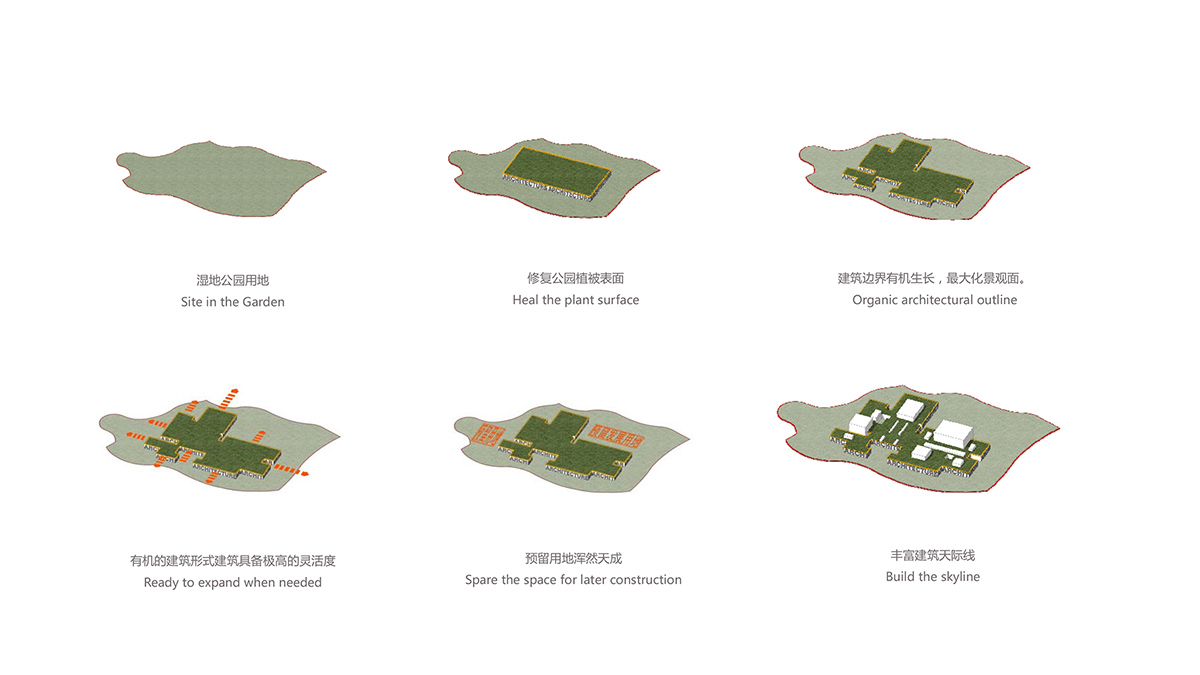
主要項目信息
項目名稱:唐仲英基金會中國中心
項目位置:江蘇省蘇州市吳江區東太湖生態園內
建築麵積:15000平方米
主要材料:SRC 玻璃纖維水泥板——上海盈創、 屋麵綠化、玻璃幕牆
設計師:董丹申、楊易棟、滕美芳、林再國
設計及工程總體控製:浙江大學建築設計研究院有限公司(http://www.zuadr.com/)
室內設計: 伍茲貝格、杭州典尚設計
景觀設計: 中國美術學院風景建築設計研究院鄭捷所
結構工程師:張明山、徐成、李本悅
設備工程師:李浩軍、龔增榮、董紹兵、黃正傑、劉海峰
攝影師: 趙強
Project name: Cyrus Tang Foundation Center
Location: East Tai Lake Ecological Park, Wujiang District, Suzhou, China
Area: 15,000 m2
Main materials: SRC, roofing plant, glass curtain wall
Architects: Dong Danshen, Yang Yidong, Teng Meifang, Lin Zaiguo
Architectural design firm: The Architectural Design and Research Institute of Zhejiang University Co., Ltd. (UAD)
Architectural design firm website: http://www.zuadr.com/
Interior design: Woods Bagot, Hangzhou Dianshang Building Decoration Design
Landscape design: The Design Institute of Landscape & Architecture China Academy of Art (Zheng Jie Studio)
Structural engineers: Zhang Mingshan, Xu Chen, Li Benyue
MEP engineers: Li Haojun, Gong Zengrong, Dong Shaobing, Huang Zhengjie, Liu Haifeng,
Photographer: Zhao Qiang


